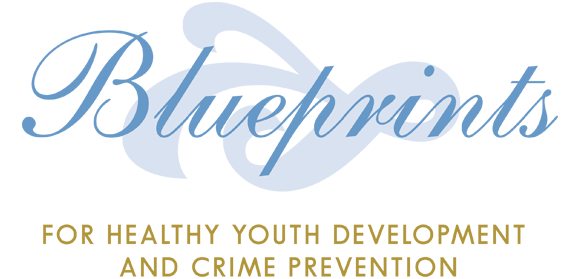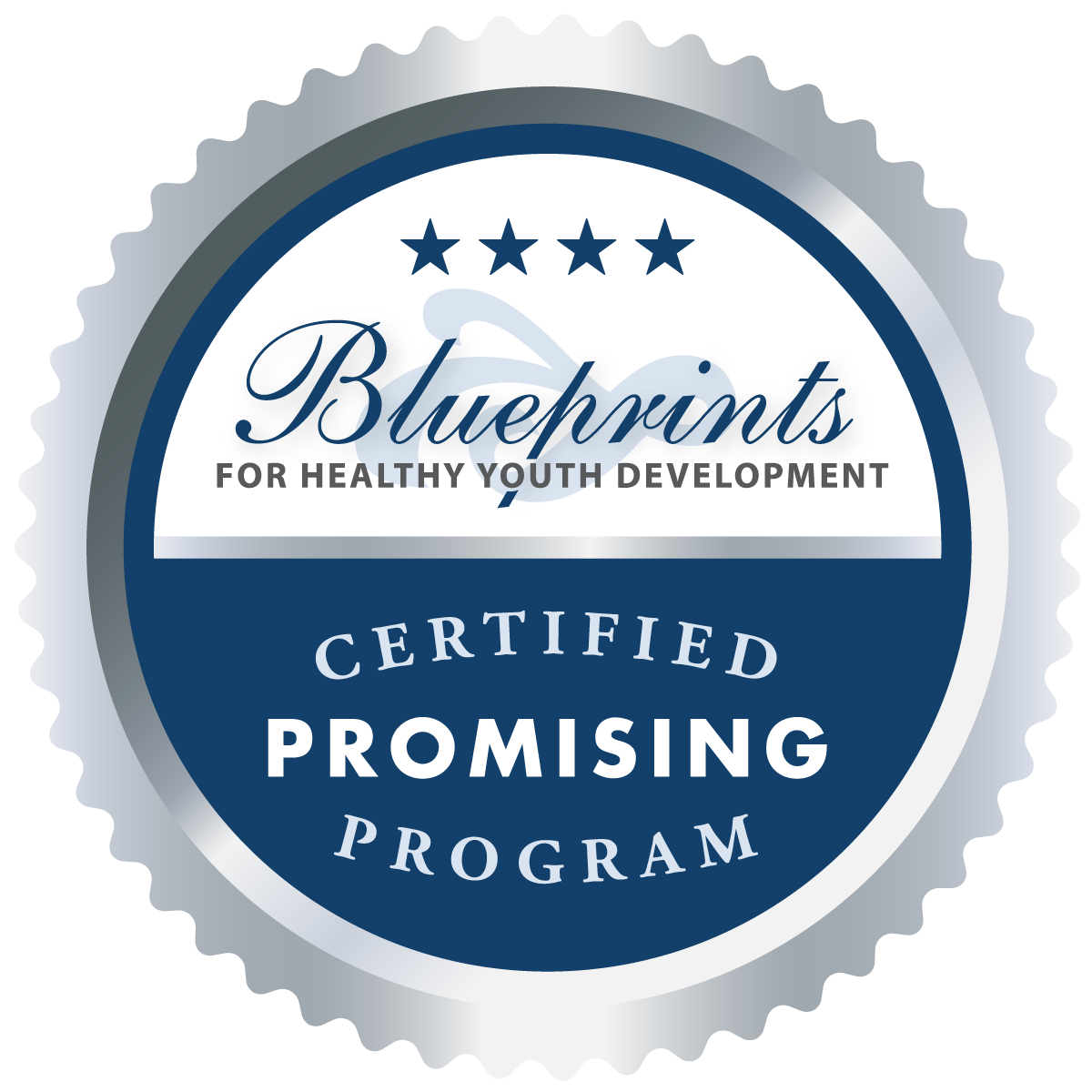
Program Search
This interactive search enables you to identify Blueprints-certified interventions based on specific criteria and then browse through a wide range of interventions that match those criteria. Select only a few criteria of importance, as the number of interventions may be reduced by selecting multiple items ACROSS categories, or increased by selecting multiple items WITHIN categories.
Model and Model Plus programs are listed separately from Promising programs. This is because only Model and Model Plus programs have demonstrated efficacy for changing outcomes over time and are recommended for large-scale implementation. Promising programs show promise of efficacy, but require follow-up research before being recommended for large-scale adoption.
9 Programs
| Program | Rating | Summary |
|---|---|---|
|
Treatment Foster Care Oregon
|
 Model
Model
|
A therapeutic foster care program with the goal of reuniting families, reducing delinquency and teen violence, and increasing prosocial behavior and participation in prosocial activities through behavioral parent training and support for foster parents, family therapy for biological parents, skills training and supportive therapy for youth, and school-based behavioral interventions and academic support.
A therapeutic foster care program with the goal of reuniting families, reducing delinquency and teen violence, and increasing prosocial behavior and participation in prosocial activities through behavioral parent training and support for foster parents, family therapy for biological parents, skills training and supportive therapy for youth, and school-based behavioral interventions and academic support.
|
Target Population
Age: Late Adolescence (15-18) - High School, Early Adolescence (12-14) - Middle School |
||
|
Project Towards No Drug Abuse
|
 Model
Model
|
A high school classroom-based drug prevention program that aims to prevent teen drinking, smoking, marijuana, and other hard drug use. A high school classroom-based drug prevention program that aims to prevent teen drinking, smoking, marijuana, and other hard drug use. |
Target Population
Age: Late Adolescence (15-18) - High School |
||
|
Positive Action
|
 Model
Model
|
A school-based social emotional learning program for students in elementary and middle schools to increase positive behavior, reduce negative behavior, and improve social and emotional learning and school climate.
A school-based social emotional learning program for students in elementary and middle schools to increase positive behavior, reduce negative behavior, and improve social and emotional learning and school climate.
|
Target Population
Age: Early Adolescence (12-14) - Middle School, Late Childhood (5-11) - K/Elementary |
||
|
Blues Program
|
 Model
Model
|
A school-based group intervention that aims to reduce negative cognition and increase engagement in pleasant activities to prevent the onset and persistence of depression in high school students exhibiting depressive symptoms. A school-based group intervention that aims to reduce negative cognition and increase engagement in pleasant activities to prevent the onset and persistence of depression in high school students exhibiting depressive symptoms. |
Target Population
Age: Late Adolescence (15-18) - High School |
||
| Program | Rating | Summary |
|---|---|---|
|
RealTeen
|
 Promising
Promising
|
An internet-based, gender-specific drug abuse prevention program intended to reduce substance use among early adolescent girls through improving personal, social, and drug refusal skills. An internet-based, gender-specific drug abuse prevention program intended to reduce substance use among early adolescent girls through improving personal, social, and drug refusal skills. |
Target Population
Age: Early Adolescence (12-14) - Middle School |
||
|
PROSPER
|
 Promising
Promising
|
A delivery system that attempts to foster implementation of evidence-based youth and family interventions, complete with ongoing needs assessments, monitoring of implementation quality and partnership functions, and evaluation of intervention outcomes.
A delivery system that attempts to foster implementation of evidence-based youth and family interventions, complete with ongoing needs assessments, monitoring of implementation quality and partnership functions, and evaluation of intervention outcomes.
|
Target Population
Age: Early Adolescence (12-14) - Middle School |
||
|
Learning Together
|
 Promising
Promising
|
A whole-school program that aims to improve the school environment to reduce bullying and aggression, and promote student health and wellbeing. A whole-school program that aims to improve the school environment to reduce bullying and aggression, and promote student health and wellbeing. |
Target Population
Age: Early Adolescence (12-14) - Middle School |
||
|
Guiding Good Choices
|
 Promising
Promising
|
A family competency training program that aims to enhance parenting behaviors and skills, to enhance effective child management behaviors and parent-child interactions and bonding, to teach children skills to resist peer influence, and to reduce adolescent problem behaviors.
A family competency training program that aims to enhance parenting behaviors and skills, to enhance effective child management behaviors and parent-child interactions and bonding, to teach children skills to resist peer influence, and to reduce adolescent problem behaviors.
|
Target Population
Age: Early Adolescence (12-14) - Middle School |
||
|
Big Brothers Big Sisters of America
|
 Promising
Promising
|
A community mentoring program which matches a volunteer adult mentor to a child or adolescent to delay or reduce antisocial behaviors; improve academic success, attitudes and behaviors, peer and family relationships; strengthen self-concept; and provide social and cultural enrichment. A community mentoring program which matches a volunteer adult mentor to a child or adolescent to delay or reduce antisocial behaviors; improve academic success, attitudes and behaviors, peer and family relationships; strengthen self-concept; and provide social and cultural enrichment. |
Target Population
Age: Late Adolescence (15-18) - High School, Early Adolescence (12-14) - Middle School, Late Childhood (5-11) - K/Elementary |
||
 Program
Program